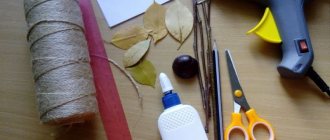Summary of the lesson “Dymkovo toy” for children of the preparatory group
Summary of the lesson “Dymkovo toy” for children 6-7 years old
Author: Naira Igorevna Nersesyan, teacher at MBDOU “General developmental kindergarten No. 144”, Voronezh
Purpose: teachers of senior and preparatory groups, primary school teachers, parents. Goal: Introducing children to folk culture. Objectives: -Introduce the history of the Dymkovo toy. -To cultivate love and respect for the work of folk craftsmen, for the folk art of Russia. -To consolidate children’s knowledge about the process of making Dymkovo toys and the ability to talk about it. -To develop knowledge about the characteristic features of painting toys, the ability to create patterns according to one’s own design. Learn to identify the elements of the geometric pattern of Dymkovo painting (circles, straight and wavy lines, checkered patterns, dots and peas). Learn to paint with Dymkovo patterns. -Develop aesthetic perception, sense of rhythm, color, creativity. Deepen aesthetic knowledge of folk arts and crafts. Preliminary work: drawing up a presentation “Dymkovo toy”, original Dymkovo toys for demonstration, printed stencils on white paper (A4 format) and colored pencils. Lesson plan: - 1. Organizational point 2. Theoretical part.
An introductory conversation about the history and process of creation with a demonstration of Dymkovo toys, paintings, presentations. An explanation of the painting sequence. 3. Final part. Progress of the lesson
Educator: Guys, you all have toys, but what are they made of? Children: Our toys are made of plastic, rubber, metal, wood, fabric. Educator: Let's find out what toys are made in the village of Dymkoye? What is Dymkovo famous for? With his toy. There is no smoky color in it, But there is the love of people. There is something in it from the rainbow, from drops of dew. There is something of joy in her, thundering like bass. (V. Feofanov) Educator: People affectionately and tenderly call this toy “haze.” Where does such an amazing name come from? Let us introduce you to Dymkovo clay toys. I was born in the large settlement of Dymkovo across the river near the city of Vyatka. In ancient times, residents of this settlement, young and old, sculpted clay toys for the spring fair. In winter, the entire settlement is filled with smoke from the fact that the stoves are heated and toys are burned. On cloudy days, the fog spreads from the river like a light haze. Perhaps this is where the name Dymkogo came from, and the toys began to be called Dymkovo. Dymkovo toys were made for the ancient holiday “Whistling Dance”. Later, the fair-holiday began to be called “Whistling”. What kind of toys are these, let's see? Through the mountain spurs, Through the roofs of villages, A red-horned, yellow-horned clay deer rushes.
Here is a smart turkey, He is all so fine, The big turkey has all his sides painted. Look, his fluffy tail is not at all simple, It’s like a sunny flower, and then there’s the comb.
The Dymkovo young lady is all in orange, gold, scarlet and green patterns.
Look how beautiful this girl-soul is, her scarlet cheeks are burning, her outfit is amazing. Even the horses are in festive outfits.
Clay horses race on stands as hard as they can. And they won’t hold on to the tail if they lose the mane. Educator: What do all these toys have in common? Children: All toys have bright colors, everything is on a white background, covered with beautiful patterns. Educator: What paint do you think the toy is first coated with? Children: White. On a white background, the patterns stand out well and beautifully.. Educator: Can you guess where the masters got the white color from? Children: They took it from the snow, from winter. The toys were made in winter!!! Educator: That's right. The craftsmen took the white background from the snow-covered fields, when in winter everything around is white and white. In those places, the winter is long and there is a lot of snow. The craftsmen want to make the toy as clean and white as snow. Why are they bright?
Children: Because they were made for the holiday, so they painted them with bright colors. Educator: What colors did the masters use to paint toys? Children: They used bright colors: red, blue, crimson, yellow, orange, green. Educator: What patterns do you see on the toys? Children: On the toys there are circles, dots, lines, squares, stripes, curves, waves, squares, rings, ovals. Educator: What images can be seen in Dymkovo toys? Children: Horse, cockerel, deer, ram, young lady. Educator: The most common subjects: nannies with children, water carriers, rams with golden horns, turkeys, roosters, deer and, of course, young people, buffoons, ladies. Educator: Let's find out how a toy is created? (Children watch the video on the interactive board, the teacher talks at the same time). A lot of work must be put into making the toy so elegant. It is born three times. The first time it is born is when it is sculpted from red clay. The figures are sculpted in parts, individual parts are assembled and completed, using liquid red clay as a binding material. The molding marks are smoothed out to give the product a smooth and neat surface. The toy must be burned to make it durable. The intense heat causes the toy to become hot, and when it cools down, the clay becomes ringing and strong. This is how the toy is born a second time. There is a trial by fire. And when is the third time born? Children: The third time a toy is born is when it is whitened and painted. Educator: Then it is whitewashed with chalk diluted with milk and painted. Sometimes pieces of gold leaf are stuck on top of the pattern, which gives the toy even more elegance. This is how it is born for the third time. Beautiful, bright, elegant toys are sold at the fair. Making a toy, from modeling to painting - the process is unique and creative, never repeated. There are not and cannot be two absolutely identical products. Each toy is unique, unique and inimitable.
Educator: I suggest you become real folk craftsmen and paint the stencils of the Dymkovo toy. Printed stencils are distributed to children. They begin to “paint” with pencils with pleasure. In the process of independent work, the teacher provides children with complete creative freedom, providing individual assistance. You can turn on soft folk music. At the end of the lesson there is an exhibition.
We recommend watching:
Lesson with older preschoolers. Dymkovo toy Lesson notes on labor training in 2nd grade Notes of GCD in the middle group. Dymkovo toy Abstract of the GCD for sculpting “Dymkovo toy”. Preparatory group
Similar articles:
Modeling figures from plasticine
Master class for preschool teachers. Dymkovo lady
Lesson notes for the middle group. Dymkovo toy
Evolution of toys
The evolution of the toy is interesting. Of course, the oldest examples have not survived, but several toys from three hundred years ago have somehow miraculously survived. At first these were more finely sculpted sculptures, with carefully sculpted facial features, with precise adherence to the proportions of the figure.
And their coloring was more modest, brown prevailed, with a little yellow and white. But over time, the toy became more decorative, and if you look at those that were made, say, a hundred and fifty years ago, you can clearly identify the already established, more laconic, one might say, impressionistic sculpting technique and the specifics of painting the figures.
By the way, the styles of clothes “put on” the toy also developed then, and have remained unchanged since then: dresses with crinolines, aprons with lush frills, kokoshniks for nannies, special-style men’s hats, military uniforms, etc.
The fishery almost came to naught. In the second half of the 19th century, the tradition of making Dymkovo toys began to fade away due to the numerous fakes made from cheaper materials.
But the beginning of the 20th century was characterized by growing interest in true folk art: epics, weaving, carving and, of course, toy making. Fortunately, the production technique was not yet forgotten, and the Dymkovo toy “rose from the ashes,” moreover, ceasing to be a purely female occupation.
Hereditary craftswoman A.A. Mezrina and artist A.I. Denshin actively continued and popularized fishing traditions. Thanks to their work, the Dymkovo toy was preserved in difficult times for the country and received the opportunity for further development.
About eighty years ago, due to the huge demand for them and the need to work with large quantities of raw materials, men began making and painting toys.
Revival of the fishery
The revival of the craft took place in Soviet times in the 30s of the 20th century and is associated with the name of A.I. Denshin, who managed to persuade hereditary craftswomen A. Mezrina, E. Penkina, E. Koshkina not to give up their craft and organize the “Vyatka Toy” artel.
Today, tempera paints and soft core brushes are used for painting. Using a wide range of colors, including a lot of red, yellow, blue, and green.
Presentation
Probably, you guys also wanted to create such toys for yourself?
Unfortunately, it is impossible to do this at home, even if you know how to sculpt with clay. But you can try to color the silhouettes of Dymkovo toys. On our website you will find photos, pictures and coloring pages for children depicting Dymkovo toys. They can be downloaded and printed. You will be met:
- cheerful cockerel,
- important duck,
- puffy turkey,
- graceful horse
- and a lady dressed in elegant clothes.
- Also here you will find numerous patterns that decorate the Dymkovo toy.
However, don’t rush into coloring books. First, carefully look at the photos of the toys, remember what colors the figures are painted with, since the colors on the figures have their own pattern. Photos will help you draw your own conclusions, and coloring pages for children will help you practice. Probably the most favorite toys of children are the cockerel and the turkey; sometimes the children mention the lady. Why? They are the brightest, most elegant. Think about what a rooster looks like, what colors you use to paint it, because in the old days a rooster was a symbol of the beginning of a new day, the sunrise. His figure contains all the colors of the rainbow. The photos and coloring pages offered on our website will help children become more familiar with this unusual Russian folk craft, show their imagination and ingenuity, and learn to draw. Acquaintance with any ancient craft enriches a child, connects him with his ancestors, with Russian roots. And getting to know toys is doubly interesting. From time immemorial, they reveal their secrets to children, share their cheerfulness, create a good mood and creative enthusiasm.




